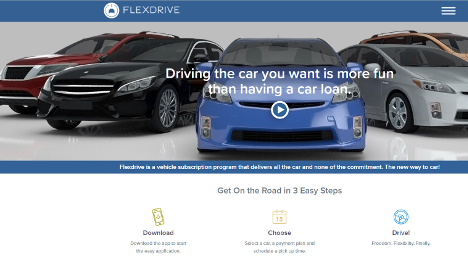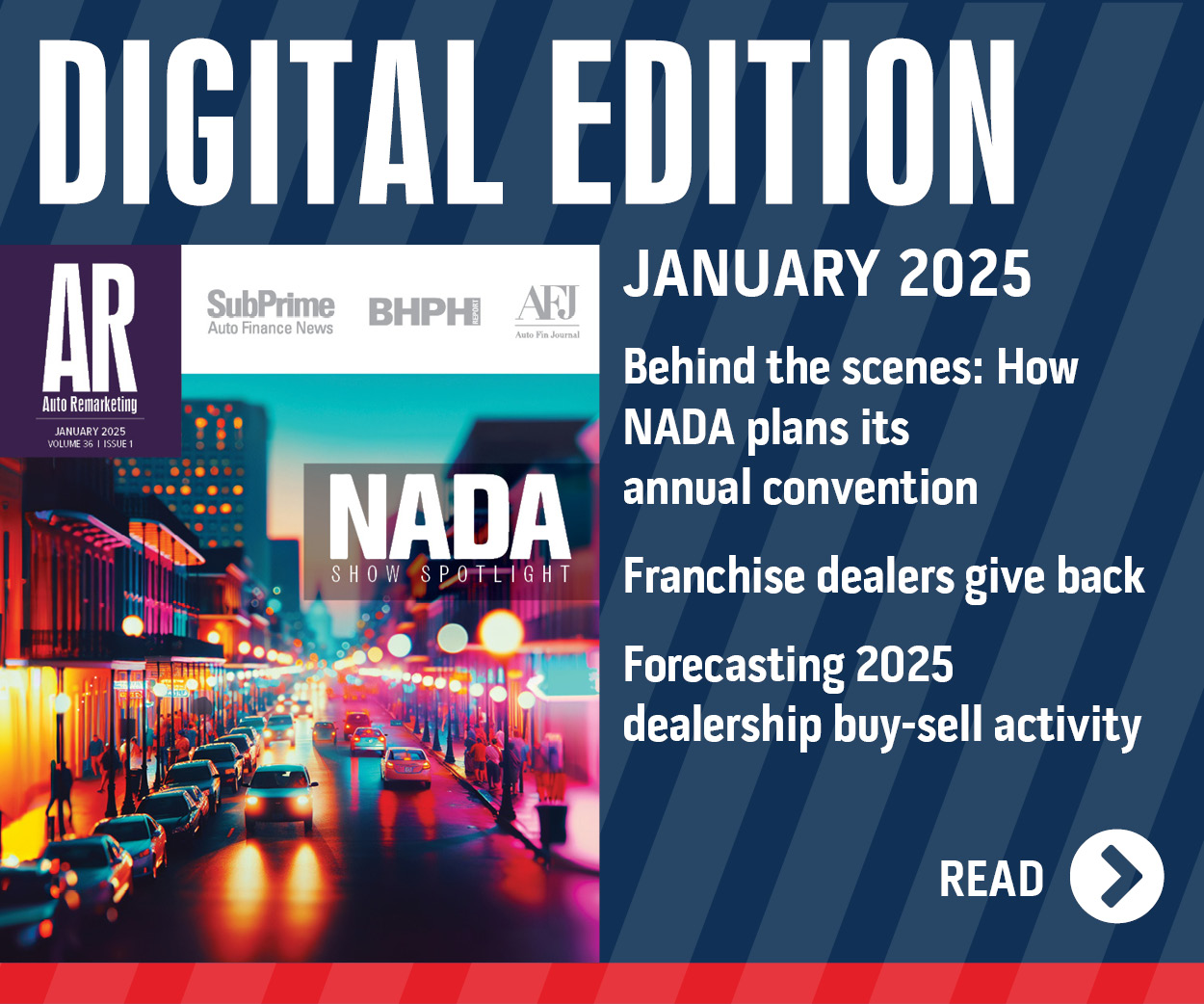Flexdrive model seen as opportunity for dealers

Screenshot from Flexdrive.com
As it turns, these new models of vehicle usage or ownership may actually be an opportunity for dealers, rather than a threat.
At least that appears to be the case with Flexdrive, a vehicle subscription platform that is now a joint venture between Cox Automotive and Holman Enterprises.
“A lot of people talk about the demise of dealers because of ride-share, car-share and autonomous vehicles that are going to come at some point,” Cox Automotive vice president of consumer mobility David Liniado said in an interview late last month.
“We really do think because they’re vehicles and the intrinsic nature of just storage and service and maintenance and the logistics, that the dealership model and footprint is very well-situated for these new form factors,” Liniado said. “Our premise is that the dealership, the retailer’s model that’s out there today, can actually utilize through a platform like this and can really help us scale.
“It won’t be the only model. There will be other form factors for Flexdrive, but we really do think the dealer is situated very well for this.”
With the joint venture announced in late May, both Cox Automotive and Holman have a 50-percent ownership stake in Flexdrive, a business model that was created at Cox Automotive in 2014.
The product had been in Cox Automotive’s incubator but transitioned into the joint venture in early April.
Holman has 38 franchised dealers, a fleet management company in ARI and many other business ventures.
“Obviously, it’s an exciting partnership with Holman,” Liniado said. “But that's all another step in our process to build a scalable model that we can roll out across the industry … thinking about dealers, thinking about other fleet owners. Really think about this as a new mobility option and a platform.
“And we’re seeing a lot of these already, I think, that are still at a relatively small scale. But between the two organizations, we really have a big vision on how big this model could get.”
The joint venture is led by Jose Puente, president of Flexdrive, who joined Liniado in the same May phone interview with Auto Remarketing.
“When you look at the model of Flexdrive, what we’re really trying to do is create more utilization out of an existing asset, which today is a car that’s sitting on a car dealership lot,” Puente said.
“And depending on the market and how things go, there’s no real predictability in how quickly that inventory’s going to turn, so those are just unused assets that are just sitting there and they’re costing somebody money every day,” he said.
You can apply the same concept to the fixed operations side of a dealer’s business, Puente said. There is a good bit of operational costs tied up in facilities, infrastructure, marketing, staff and so forth, which can lead to “underutilized capacity.”
“There’s a lot of demand from consumers. And all that demand is really constrained through their ability to finance a car or their desire to even finance a car,” Puente said. “So by creating an efficient option for people to leverage existing operations that are already designed to have a very good user experience on where to go pick up a car or where to process a car for a retail consumer, you’re creating a lot more opportunity for those assets to actually start being productive.
“And you’re also providing the retailer the opportunity to actually now have what they haven’t had, which is a recurring revenue stream.”
Different than renting or leasing
The obvious question from the consumer side might be, how is “subscribing” to a car different than renting?
Puente points to the numerous restrictions around renting as well as the variable pricing based on a number of factors. There are also the insurance costs and mileage restrictions.
“In our case, we’re really looking at providing this alternative to people that otherwise would be looking to buy a car. So we’re not really positioning Flexdrive in the market, in any way, to be confused with renting,” he said.
“Renting is either for business purposes or for a short-term … Flexdrive is really designed to address the market opportunity for people that are in market that require a car in their driveway for an extended period of time that otherwise would have to buy a car,” Puente said. “It provides them with an alternative, where it’s just easier and puts all of the power in their hands (through) the mobile app, within minutes, to access and get into a car and switch it around as their needs change.”
Liniado added: “It really is car ownership with flexibility … There are literally thousands of use cases where somebody needs to put it on pause … if you lease a car or buy a car, you can’t put it on pause. And there’s a lot of restrictions.”
Leasing typically involves a large down payment, a contract of at least three years and mileage restrictions, Puente pointed. Leasing also doesn’t always provided coverage if something were go to wrong in the vehicle, he said, and the drive must pay for registration and insurance in a lease.
Flexdrive is also designed to be for used cars, whereas pre-owned is a very small slice of leasing.
Logistics, ARI involvement & more
As far as vehicles in the program, the recommendation is for dealers to use low-mileage off-lease units, though they can use it on new cars.
Holman also includes ARI. Asked how that fleet management will be involved, Puente said: “What we’re doing with ARI is, we’re basically integrating the fleet management services that are typically offered through a commercial program down to the consumer level.
“So, for example, as a consumer when you’re in the program, you don’t have to worry about dealing with things like oil changes, getting new tires and brakes and all the basic maintenance and service that occurs with a car. And those are all the same kinds of benefits that you would have if you were operating a vehicle under a commercial lease that’s got fleet management as part of it.”
The company doesn’t plan on having Flexdrive standalone locations, instead opting to have it as a service as part of a dealer’s operation, Puente said. There will be branding at the dealerships to build awareness, he said.
And as far as sourcing, Liniado said dealers can use vehicles already in their inventory or cars they source from the wholesale market.
In terms of the recommended time a dealer keep a vehicle in the Flexdrive program, it’s whatever comes first: the vehicle is in the program for two years or it reaches 90,000 miles on the odometer, Puente said. When it hits that mark, the dealer can either keep the car to retail it or choose to sell it wholesale.

 View The Latest Edition
View The Latest Edition

